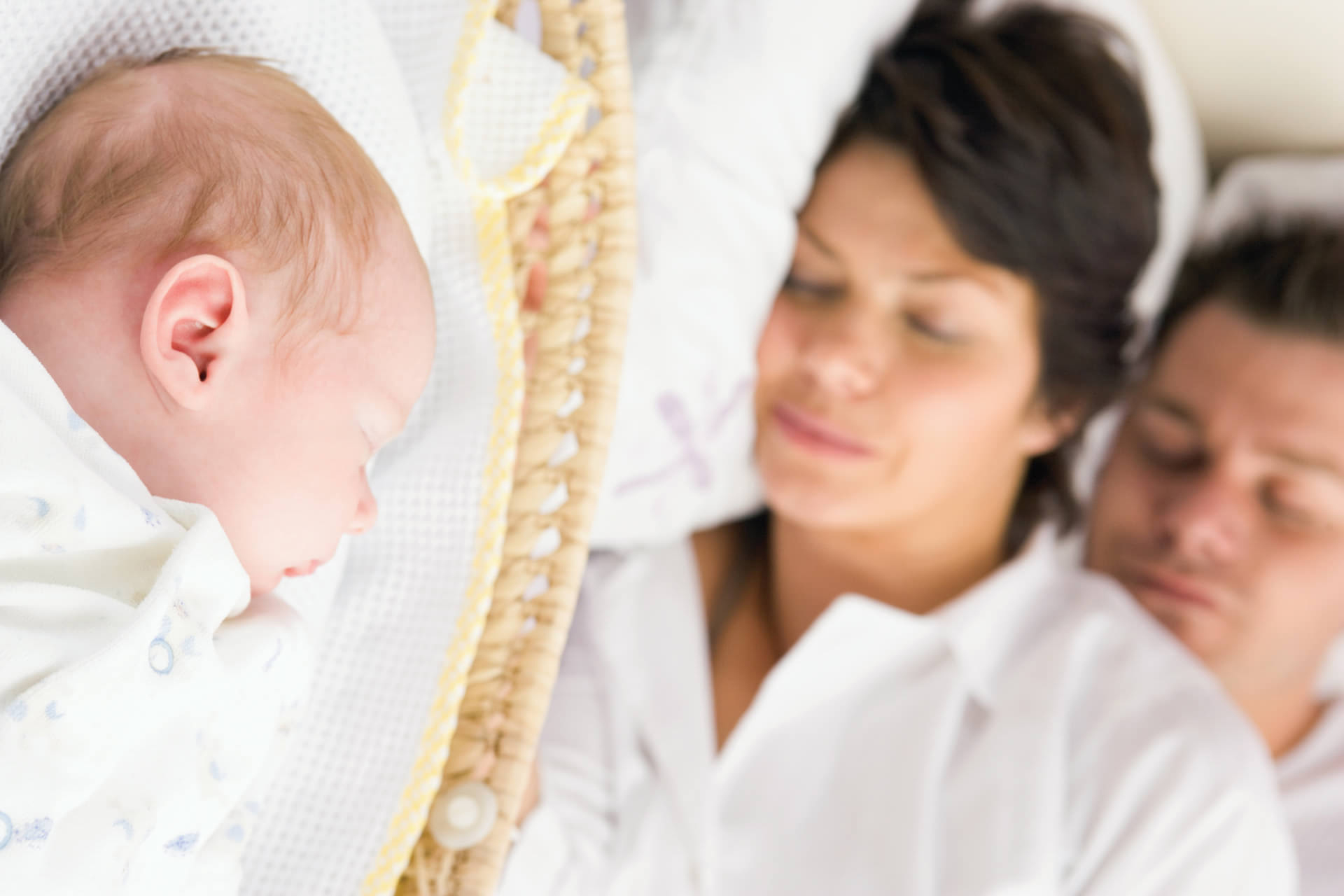
Pon a dormir a tu bebé en un entorno seguro
- Home
- Live Well Blog
- Pon a dormir a tu bebé en un entorno seguro
Si miras fotos de tu cuna cuando eras bebé, es probable que veas protectores, una mantita y quizás algunos peluches. Ahora sabemos que todas esas cosas, aunque sean adorables, podrían aumentar el riesgo de que el bebé sufra una muerte relacionada con el sueño.
“Muerte súbita e inesperada de un lactante” (MSIL) y “síndrome de muerte súbita del lactante” (SMSL) son términos que se utilizan para explicar la muerte repentina e inexplicable de bebés menores de 12 meses. La muerte de bebés relacionada con el sueño es un caso frecuente de MSIL.
Por suerte, hay cosas que puedes hacer (incluso durante el embarazo) para prevenir la muerte súbita e inesperada de un lactante.


Consejos de la American Academy of Pediatrics:
- Siempre acuesta al bebé boca arriba cuando lo pongas a dormir. Es probable que se ponga a los bebés boca abajo en la UCIN, pero se los debe acostar boca arriba cuando vayan a casa.
- Tu bebé debería ser lo único que haya en la cuna. No debe haber nada de juguetes, acolchados, mantas ni protectores.
- La superficie para dormir debe ser firme, no mullida, y debe tener un cubrecolchón ajustado. No sujetes nada a las barras de la cuna ni inclines el colchón.
- Puedes compartir la habitación, pero no la cama, con tu bebé: esto puede disminuir en un 50 % el riesgo de SMSL en los primeros tres meses de vida del bebé. Puedes alimentar y consolar al bebé en tu cama, pero ponlo a dormir en su propia cuna o moisés.
- Las drogas, el alcohol y el sueño no son buenos aliados a la hora de compartir la cama con tu bebé, ni siquiera un rato. Si has consumido sustancias, evita llevar al bebé a la cama contigo, tomar una siesta juntos en el sillón, etc. Es muy probable que te quedes dormida, y tu bebé no estaría seguro.
- Evita elevar la temperatura corporal del bebé, esto también aumenta el riesgo de muerte infantil relacionada con el sueño. Los signos de temperatura alta incluyen sudoración o que el pecho esté caliente al tacto.
Preguntas frecuentes
¿Y si un bebé tiene reflujo? ¿No se lo debería poner a dormir boca abajo?
No, según la American Academy of Pediatrics (AAP), se debe acostar a todos los bebés boca arriba, a menos que el pediatra te haya recomendado lo contrario.
¿Está bien que mi bebé duerma con chupete?
¡Sí! Es bueno ofrecer un chupete a la hora de dormir o de la siesta, pero espera a que la lactancia materna esté bien establecida. Durante el sueño, no le cuelgues el chupete del cuello ni lo sujetes de la ropa. Si el chupete se cae mientras el bebé duerme, no es necesario volver a ponérselo.
¿Mi bebé no tendrá frío sin una manta?
Un buen consejo es vestir a tu bebé para dormir con una capa más que la que tienes puesta fuera de la cama. Para que el bebé no tenga frío, ponle con un pijama enterizo o, en invierno, un saco de dormir o un pijama acolchado. Evita abrigar de más a tu bebé, ya que los bebés con demasiada temperatura corporal corren un riesgo mayor de MSIL.
¿Qué debo hacer cuando mi bebé aprenda a voltearse?
Sigue acostándolo boca arriba, pero está bien dejarlo si se voltea para estar boca abajo. Deberías dejar de envolver al bebé cuando comience a intentar voltearse, por lo general, a los 3 o 4 meses.
¿Está bien poner al bebé boca abajo cuando está despierto y fuera de la cuna?
¡Sí! De hecho, se recomienda que pase tiempo boca abajo; esto puede disminuir el riesgo de MSIL. La AAP recomienda unos minutos por día de tiempo boca abajo supervisado poco después de llevar al bebé a casa y aumentar a 15-30 minutos totales por día para cuando el bebé tenga 7 semanas.
Otras cosas que puedes hacer para prevenir las muertes relacionadas con el sueño
- Durante el embarazo, asiste a citas regulares de atención prenatal y evita el alcohol, la marihuana, los opioides y las drogas ilegales.
- Evita fumar en el entorno de tu bebé, incluso si fumas afuera. Esto incluye vapear y los cigarrillos electrónicos. Mantén tu automóvil y hogar libres de humo para evitar que tu bebé respire humo de segunda mano.
- No uses mantas pesadas para envolver ni pongas objetos pesados dentro de las mantas para envolver.
- No fumes ni vapees durante el embarazo; es un factor de riesgo importante de la SMSL.
- Amamanta a tu bebé todo el tiempo posible. La lactancia materna durante al menos 2 meses puede disminuir en un 50 % el riesgo de SMSL para tu bebé.
- Durante el embarazo, asiste a citas regulares de atención prenatal y evita el alcohol, la marihuana, los opioides y las drogas ilegales.
- No fumes ni vapees durante el embarazo; es un factor de riesgo importante de la SMSL.
- Evita fumar en el entorno de tu bebé, incluso si fumas afuera. Esto incluye vapear y los cigarrillos electrónicos. Mantén tu automóvil y hogar libres de humo para evitar que tu bebé respire humo de segunda mano.
- Amamanta a tu bebé todo el tiempo posible. La lactancia materna durante al menos 2 meses puede disminuir en un 50 % el riesgo de SMSL para tu bebé.
- No uses mantas pesadas para envolver ni pongas objetos pesados dentro de las mantas para envolver.
Para obtener más información sobre la seguridad en la cuna, consulta
https://www.cpsc.gov/safety-education/safety-guides/cribs/crib-safety-tips